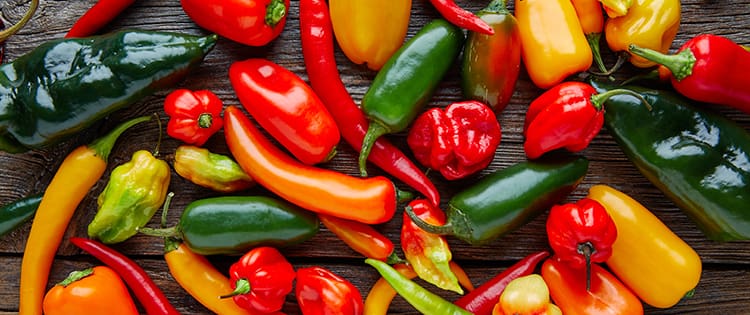Peppers are versatile and satisfying vegetables to grow on a homestead. Whether you’re looking to sell them or add some flavor and zest to your meals, growing peppers can provide a bountiful harvest. One of the best ways to maximize the growth potential of your peppers is to pair them with companion plants and keep them away from certain plants. In this article, you’ll learn about the plants that will boost your pepper’s growth, and the plants that won’t, as well as some unique ways to grow peppers.
Unique Ways to Grow Peppers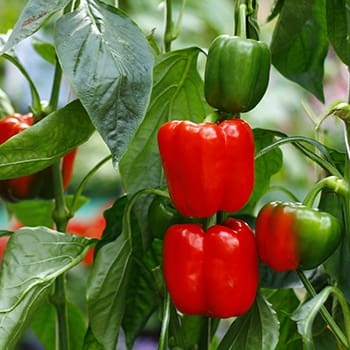
There are several ways to grow peppers other than the traditional method of planting them in a garden bed. Here are some of them:
Greenhouse Peppers: Growing these vegetables in a greenhouse provides several benefits such as:
- Increased Yields: Greenhouses allow you to increase production and harvest more peppers per plant because they’re in a consistent, stable environment that promotes healthy growth.
- Better Quality: Greenhouses provide the best-growing conditions including stable light levels, humidity, and temperature. Optimal conditions make the peppers juicier, sweeter, and more flavorful.
- Customization and Flexibility: Growing peppers in a greenhouse allows you to tailor the growing conditions to your specific needs. For example, you can control things such as light levels, humidity, and temperature.
Related: Plant This Vegetable Once and Harvest it For 30+ Years
Hydroponic Peppers: Hydroponics involves growing plants without soil and using water instead. The hydroponic technique gives you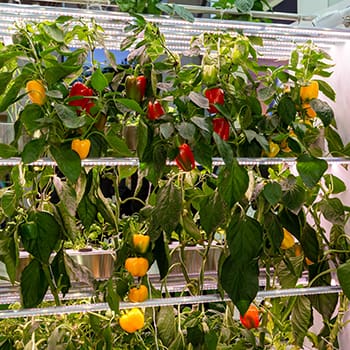 complete control over the growing conditions including the nutrient and pH levels. This method leads to faster growth rates and higher yields.
complete control over the growing conditions including the nutrient and pH levels. This method leads to faster growth rates and higher yields.
Pepper Towers: You can create a pepper tower with a vertical support system such as a stake or a trellis. The tower can be made of plastic, metal, or wood, and depending on the type of pepper, it can be as tall as 6 feet. You’ll need to prune the plant often to make sure it’s got enough room to grow and it’s kept in a tower-like shape.
Upside-Down Peppers: If you want to save space and protect your peppers from pests, grow them upside down. All you’ll need is a few baskets or hanging containers.
Companion Plants For Peppers
If you want to maximize the health and strength of your peppers, grow them next to the following companion plants:
Basil: Basil acts as a pest repellent because it has such a strong scent. Planting basil next to peppers will protect them from pests such as mosquitos, thrips, spider mites, and aphids. Additionally, basil attracts beneficial insects such as predatory wasps, butterflies, and bees. All of which can help control harmful insect populations and pollinate these vegetables. Basil grows best in well-drained soil and direct sunlight. Choose a location where the plant will receive 6-8 hours of sunlight per day.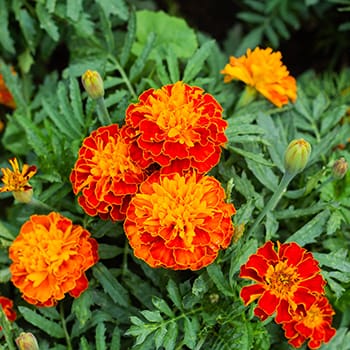
Marigolds: Marigolds are known to help improve nutrient availability and soil structure because of their deep root system. Marigolds aerate the soil by breaking it up which provides peppers with the nutrients required to grow strong and healthy. They thrive in full sunlight and well-drained soil. It’s important to mention that although marigolds need well-drained soil, they also need consistent moisture, so be sure to water them deeply once a week. During the growing season, apply an organic compost or a balanced fertilizer every 4-6 weeks.
Related: DIY Corner Vegetable Storage Bin
Nasturtiums: These plants attract beneficial insects such as hoverflies, lacewings, and ladybugs. They also contain a chemical compound called methyl salicylate which is toxic to pests such as cucumber beetles, whiteflies, and aphids. Nasturtiums need around 4-6 hours of direct sunlight per day. They also grow best in well-drained soil. Plant them in slightly alkaline soil with a pH of between 6.0 and 7.5.
Oregano: Oregano reduces the need for pest control because they contain chemical compounds such as linalool, limonene, thymol, and carvacrol which repel pests such as whiteflies, mosquitos, and ants. When planting oregano, they’ll need at least 6-8 hours of direct sunlight per day. Amend the soil with well-rotted manure or compost to improve soil drainage and fertility. Oregano prefers slightly alkaline soil with a pH between 6.0 and 8.0.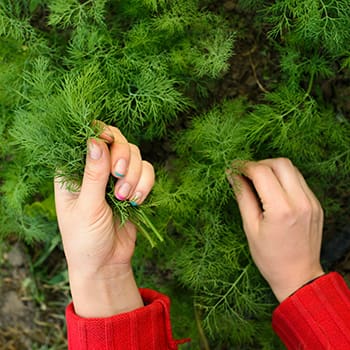
Dill: Peppers are delicious, but you can make them even more scrumptious by planting them alongside dill. Dill has a unique flavor, and when they’re grown with peppers, the oils fuse with them creating a subtle but delightful taste. Dill grows best in a sunny spot with well-drained soil. The plant can be grown in a container or a garden bed. The soil should have a pH level of 5.5-6.5, and it should be amended with organic matter or compost. Dill needs consistent moisture, but be careful not to overdo it. Additionally, fertilize the plant every 4-6 weeks with a balanced fertilizer.
What Not to Plant Next to Peppers
If you want healthy peppers that produce a good yield, you will need to keep some plants away from them. By understanding the negative consequences associated with growing certain plant combinations, you can avoid the stress of a wasted harvest.
Fennel: Fennel produces a chemical compound called anethole, when it’s released into the soil, it inhibits the growth of peppers.
Beans: For beans to grow properly, they need moist soil, but peppers grow best in drained soil. You would take too much of a risk planting them next to each other because the beans may soak up too much moisture leaving the peppers without any.
Corn: Corn will stunt the growth of peppers because they’re heavy feeders and need a lot of the same nutrients. They also need much more nitrogen than peppers and when planted together, the excess nitrogen that corns attract restricts fruit production in peppers. Additionally, because of the way corn grows, they block sunlight by providing too much shade.
Nightshades: Avoid planting vegetables from the nightshade family such as potatoes, eggplants, and tomatoes next to peppers because they’ll compete for nutrients, and share similar diseases and pests.
Final Thoughts
Growing peppers on your homestead can provide many benefits, by watering, fertilizing, and managing pests and disease, you can grow healthy and wholesome peppers to use as you desire.
You may also like:
An Insanely Effective Way to Build a 5 Year Food Stockpile (Video)
Livestock Animals You Should Start Raising For The Upcoming Economic Crisis
The One Tree That Every Homesteader Should Plant
